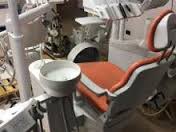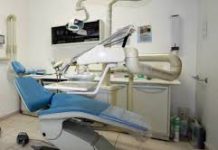Tooth infection.
Abscess is an infection of the mouth that can hit a tooth or the gum; in the first case we talk about dental abscess or periapical abscess, in the second about periodontal abscess. These are the most common type of abscess, even if this kind of infection can affect other place in the mouth or in the throat, and other sites of the body.
An abscess is a mass of pus that contain dead cells, bacteria and debris; this mass can grow inside the tooth, in the pulp chamber, and then it exits out the tooth’s apex at the bottom of the root, or it may grow in a gum pocket outside of the tooth, next to the root: in this case the gum will become tender, painful and warm to touch.
Usually patients may feel pain during chewing or touching and a strange taste in the mouth.
If the infection is not treated, it can damage the surrounding bone and teeth and a tunnel sometimes forms through the bone and skin to allow pus to drain. This tunnel is called a fistula or ‘sinus tract’; as the fistula reduce pressure the pain will disappear, but the infection still needs to be treated.
Sometimes, an abscess that isn’t treated can form a fluid-filled bubble (cyst) in the jaw bone.
Abscess causes.
Causes of a dental or periodontal abscess are different: every kind of space that is ‘left’ to bacteria and allow them to enter the tissues, as a deep cavity, periodontal disease, a cracked tooth or trauma; sometimes abscess may be originated by dental procedures, such as extractions and implants, or by previously performed dental procedures that get older and start to leak and fail.
Very often the main cause of an abscess is poor dental health and can result from lack of proper and daily oral care.
People with conditions which weaken the immun system may be more susceptible to developing a dental abscess.
Abscess treatment.
Abscess treatments depend on where the infection originates; as dental or periodontal abscess doesn’t go away on its own and antibiotics alone will not usually cure an abscess, an abscess must open and drain in order for it to improve. Sometimes draining occurs on its own, but generally it must be opened by a doctor in a procedure called incision and drainage (I&D). If the tooth may be restored, root canal therapy can be performed, non-restorable teeth have to be extracted.





